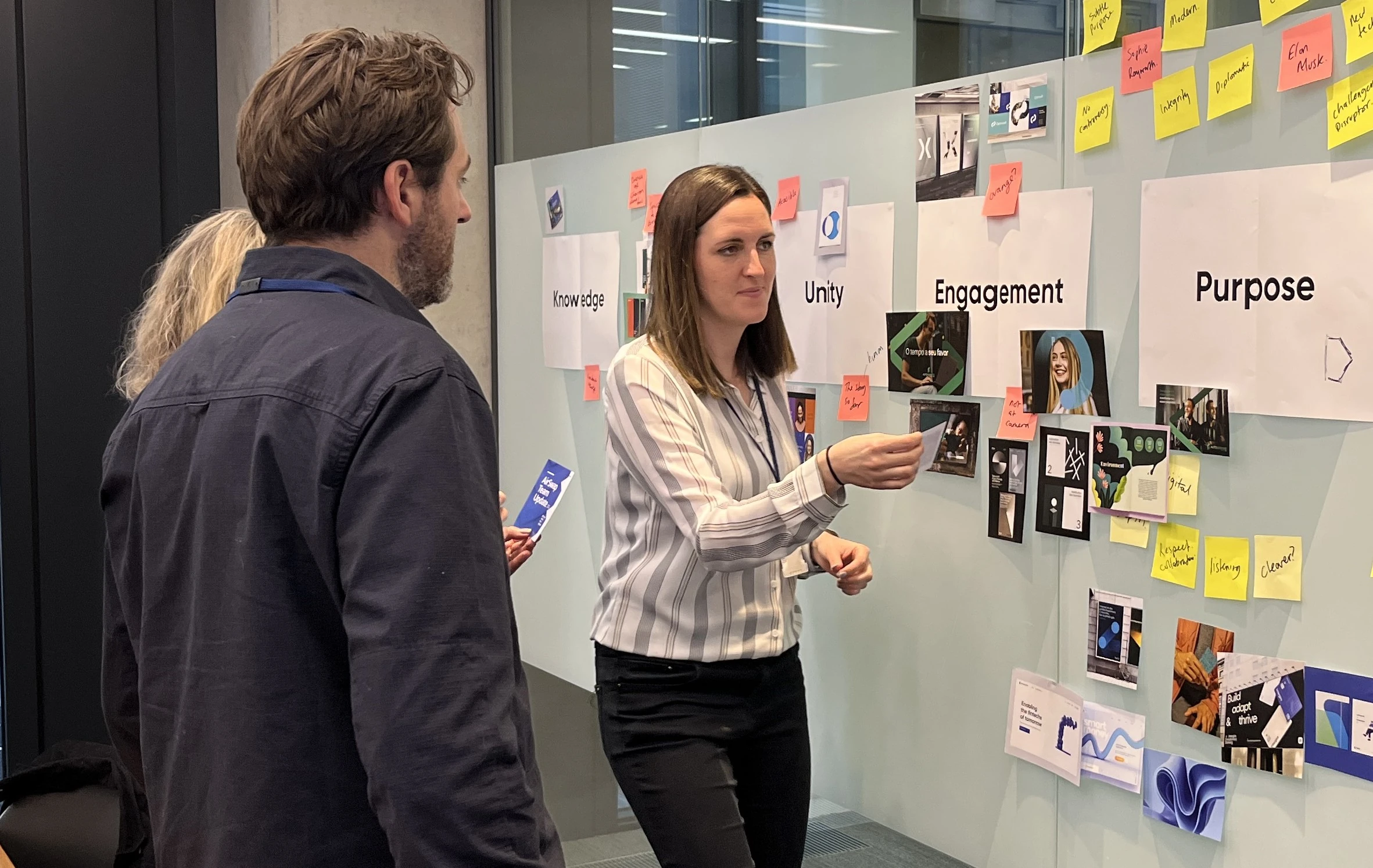What's the difference between a workshop and a meeting?
In your typical workshop, there's a distinct atmosphere: people are on their feet, tossing ideas around like a game of catch, and a level of energy that differs from your average meeting. One of the key differences is that a workshop has a facilitator. The facilitator takes the reins, steering the ship through a place where shouting out answers isn’t just acceptable - it's actively encouraged. It's less about formality and more about unbridled engagement. In essence, a workshop is a meeting's extroverted cousin, where the dynamic takes centre stage and the conventional rules get a bit of a shake-up.
What happens in a design workshop?
Led by the facilitator, everybody in the room gets the chance to chip in through a number of engaging and creative exercises. These will usually involve revisiting the values of the organisation and exploring how we can expand the opportunities of the brand whilst still communicating these values. We’ll often look at the semiotics of design – what certain colours, imagery and other design elements make us feel. These exercises will be loose in nature but decisive in outcome. The facilitator will try to reach a general consensus from everyone in the room before moving on to the next activity.
The role of the facilitator
The facilitator is there to guide the session, plan the relevant exercises and to create a level playing field for open and honest discussion. They’ll be confident in their questioning and will aim towards resolutions which are genuine and insightful. They also stop the conversations from going off on tangents or leading to just more conversations. It’s often helpful if the facilitator is someone external to your organisation, or simply someone who can offer a fresh perspective on things.
What do we get at the end of it?
The outcome of the workshop should be a clear direction of travel which solves a specific problem. The problem should be outlined before the meeting so the facilitator can tailor the exercises to extract the right result.
A good example of this was in our recent workshop with the Payment Systems Regulator where we collectively realised that the brand identity needed more softness to communicate their values of unity, purpose and engagement. We concluded that we’d benefit from using more abstract imagery for emotional buy-in as opposed to more literal visuals. This lead to a creative brief which saved our client’s time and narrowed the goalposts when entering into the design phase.
How do I arrange a design workshop?
If you’d like to talk about what a design workshop could do for your brand or next creative project, drop us a message.
Originally published:
January 4, 2024
Updated:
January 4, 2024





